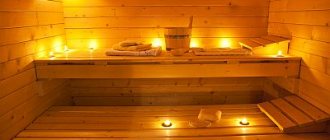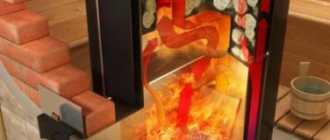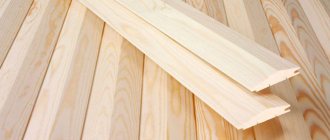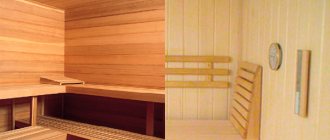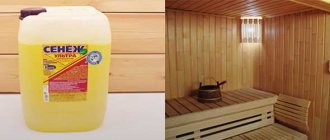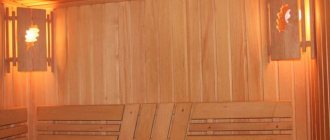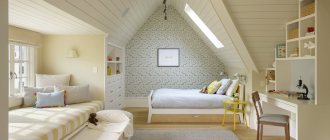At the moment, covering the surface with clapboard is one of the most popular options for finishing the surface. Unfortunately, after a certain period of time, the shalevka loses its former attractiveness and begins to darken. What to do if the lining has darkened? Is it possible to correct the current situation or will I have to do all the work again?
Painting the lining
Why does the lining darken?
As practice shows, darkening of the surface of the lining is a fairly common phenomenon. In most cases, the reason for this is the negative influence of external factors. Among other things, darkening may be due to improper storage of the material or its poor quality.
Another important nuance that should be taken into account is that any wood, regardless of how it was treated, loses its attractiveness over time and begins to darken. For example, if you pay attention to the cedar shalevka, it is very afraid of sudden temperature changes, as well as exposure to moisture.
Darkening
As for linden, it is less capricious, but, one way or another, it also gradually begins to change its color to a darker one. A similar situation is observed with regard to pine or larch lining, as the photos clearly indicate.
How can you bleach wood that has changed color?
The black and blue pigments produced by the fungus are organic substances that can be destroyed by exposure to an oxidizing agent. Oxygen or chlorine can act as such an oxidizing agent. Existing bleach mixtures contain substances that, upon contact with wood or upon interaction with each other, begin to release molecular oxygen or chlorine. They discolor pigmented areas and return the lumber to its original appearance.
Review of ready-made products: brand, instructions for use
The active ingredient in Frost bleach is sodium hypochlorite. It brightens and disinfects wooden surfaces. Does not have a pungent odor. 10 liters of product cost from 1000 rubles. Approximate consumption is from 120 to 400 ml per square meter. The composition is applied to the wood and left for 12 hours. After the end of the exposure period, the surface is washed with water.
"Sagus" is another ready-made bleach. Its price is 990 rubles. for 10 l. Consumption of the drug – 350 g/m². Apply it with a roller or spray in several stages. The exposure period is 5 hours. When working with Sagus, you must use personal protective equipment.
What to do if the lining darkens?
If the shalevka has darkened and lost its former attractiveness and has become too dark, it is absolutely not necessary to dismantle all the panels and replace them with new ones. There are 4 main methods that answer the question of how to lighten darkened lining and allow you to correct the situation. You can treat the surface with a special bleaching solution, cover it with a lighter tint varnish, paint it, or, after preliminary sanding, cover it with acrylic.
Each of these methods has both advantages and disadvantages.
- You can use a bleach solution made from hydrochloric acid, chlorine or another active substance. In this case, you should take into account the fact that after the processing is completed, the shalevka will become significantly lighter, but to maintain the effect, it is necessary to cover it with a protective varnish.
- If the wood has darkened, using a light-colored varnish is also a fairly relevant solution. In this case, the lining, of course, will not regain its original appearance, but will become much more attractive.
- Using paint can completely change the appearance. The main disadvantage of this method is the fact that after all the work is completed, the wood structure of the lining will completely disappear, giving way to the classics.
- The unique rating is completed by sanding and acrylic coating. It is acrylic that will not only help restore the skin to its former attractiveness, but also make it more resistant to various external factors. An example of the final result is shown in the photo below.
Lighting instructions
Important! The brightening solution can be used for interior and exterior work only at temperatures of 10 degrees and above.
- First, you should wipe the lining with a damp cloth to remove small debris and dust.
- Then you need to wait until the wood dries or dry it with a hair dryer at low temperature.
- The brightening mixture can be purchased at a hardware store; it needs to be diluted with a small amount of water (1:1 ratio), so that the solution is not very thick.
- You should test the mixture on an inconspicuous area, if everything is good, then you can start working.
- Next, you need to apply the product to the darkened parts of the lining using a roller; in hard-to-reach places you can use a brush, for example in corners. This brightening solution can also be applied using a spray bottle.
- After the material has dried, it needs to be opened with varnish.
Preparing for painting
If it has been decided to varnish the shalevka, or paint it with acrylic paint, before starting the main process, the surface should be prepared accordingly.
First of all, we are talking about cleaning the lining from various types of contaminants. When the surface is clean, the shalevka is degreased with an alkaline solution. The next step is sanding. To perform this, you can use a flat pumice stone or an abrasive wheel. As a result of sanding, the shalevka loses all its protective properties, which means it needs to be coated with an appropriate antiseptic solution, which not only plays a protective role, but will also preserve all the properties of the paintwork.
When the preparation is completed, the lining can begin to be painted.
If you use classic varnish, it will preserve the original pattern of the lining and will not require additional decoration. If the coating is opaque and completely hides the wood grain, then to obtain an attractive and original appearance, you should take care of additional decorations, such as window and floor design elements.
Mechanical cleaning
If the blackening of the lining has not penetrated too deeply into the wood, it can be dealt with by mechanical cleaning. The work can be done manually using sandpaper when the area is very small, or use a grinding machine with a wheel diameter of 125 mm and a grit size of about 40 units. Using this method, without losing the quality and aesthetic properties of wood, you can remove a layer of up to 3 mm.
There are a number of folk methods that talk about ways to bleach darkened lining inside a house, but they cannot be classified as effective. The most popular of them will require a lot of effort and time. The entire surface must be rubbed with soapy water, and then rubbed with sand or crushed brick until a layer of the required thickness is removed.
How to paint the lining correctly?
There is a misconception that the most relevant option is to use oil paint. This is actually not true. If you use it to renew the shalevka, the surface of the wood will acquire an unnatural shine and will take a very long time to dry. Among other things, after a very short period of time, the shalevka will again lose its attractiveness and will require updating or even replacement.
It is much better to use acrylate paints and varnishes. They will not only provide an attractive appearance, but will also give the base material high protective properties from moisture, temperature changes, and, at the same time, allow the shalevka to “breathe.” It should be noted that the approximate service life of such a coating is 8-10 years. Then the whole process will have to start all over again, or replace the panels with new ones.
There are often cases when, after applying paint and varnish, the color of the surface becomes non-uniform. This is due to the fact that the paint was not completely mixed. To ensure the correct choice of tone, a small stroke is made on the surface of the shawl. It is advisable to do it in the most hidden place. When the color is chosen, the lining is coated with an antiseptic that protects the wood from rotting, mold or fungi.
Some advice from experts
If the installation of the lining was carried out quite a long time ago, and a decision was made to update the appearance of the wood, you can do this either with your own hands or seek help from qualified specialists. Of course, the first option does not require additional costs for paying for the services of specialists, and that is why it is the most common and popular. In order for the result to be exactly what the owner wants, you should consult with experts in advance, look for relevant videos, and also clearly decide for yourself which restoration method will be the most relevant in this case.
Classification of painting materials
Darkened lining can be painted with oil, alkyd or acrylic paints to restore the attractiveness of the surface. Let's look at the advantages and disadvantages of each type of paint.
Oil paints
They have an unpleasant odor and are painted in good weather so that the room can be ventilated.
The disadvantage is the loss of shine during long-term use, it is difficult to apply another type of coating on top of this coating, and the oily surface does not breathe.
Alkyd paints
They are used for walls and floors. However, they should be applied to a completely dry surface, otherwise bubbles will form and the paint composition will then peel off. The alkyd composition is resistant to moisture and its cost is low.
Acrylic based paints
Experts recommend using these paints for lining because of their many advantages.
Advice from experienced craftsmen
So we looked at the issue, the lining has darkened, what to do . To enjoy attractive lining longer, you need to know about the basic rules for using wood and follow them. To choose lightening, consult with specialists.
If you find an error, please select a piece of text and press Ctrl+Enter.
Source
Is it possible to bleach wood after using Pinotex, firing, or brushing?
Pinotex is an acrylate-based impregnation for wooden surfaces. In addition to the acrylate base, different brands of Pinotex may contain antifungal additives, water repellents and ultraviolet ray filters. There are several shades on sale - from colorless to dark brown. In some cases, the painting result may differ by several shades from the shade stated in the catalogue.
It is easy to correct the color to a darker one: to do this, you need to cover the wood with a darker Pinotex. The opposite situation is more difficult, when you need a lighter shade. Since Pinotex is not a varnish, but an impregnation, it penetrates into the deep layers of wood, from which it is difficult to remove.
A slight lightening can be achieved by removing the top layers of the board by sanding. It is not recommended to use bleaching mixtures. Practice has shown that with this method the wood can lighten unevenly with the formation of unsightly spots.
Brushing is a process in which the softer layers of wood are sanded away. As a result, the surface of the board acquires a texture, in which the natural pattern of annual stripes and rings in places where branches branch off becomes more pronounced. Brushed wood is coated with an impregnation containing substances that prevent fungal growth.
The principle of firing is the same as that of brushing - removing loose layers. The method differs in that instead of abrasive materials, fire is used to burn out the soft layers. As a result, the smooth surface is covered with an exquisite relief of dense wood veins of a darker tone. Boards treated by firing are not bleached; carbon deposits are removed using hard brushes and water.
I hope that the material presented is enough to properly process wooden structures that have lost their visual appeal on their own. The following video will help you understand the above.

